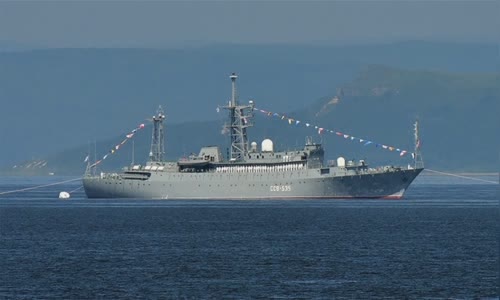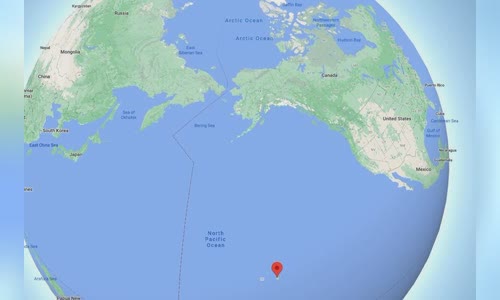Karelia reconnaissance ship turned off the automatic identification system when operating near the Hawaiian Kauai Island of the US, sometimes 13 nautical miles away.
"We pay attention to the Russian ships operating in the international waters near Hawaii and will continue to monitor the ship during the activity here," said Colonel John Gay, the US fleet spokesman

Photo: Livejournal/bmpd
"With spreaders, water surface ships and coordination capacity, we can monitor the entire boats operating in Indian Ocean - Pacific," Colonel gay said.
A US defense official said Russian reconnaissance ship complyed with international laws when operating outside Kauai and not dangerous to maritime activities.
Karelia scouts participated in a Russian Navy event at Vladivostok in 2019. Photo: Livejournal / BMPD.
The US Pacific Fleet does not provide detailed information about the Russian reconnaissance ship, but the US Naval Institute (Usni) said it was a scouts of Karelia in the Vishnya class.
Karelia scouts on May 21 worked in the position of Kauai Island of Hawaii 13 nautical miles to the West, just outside the US terrain.
Soviet Navy Persiated Karelia in 1986, the ship was then sealed in the early 2000s. The Russian Navy in 2014 began to repair and upgrade Karelia and then pay the ship three years later.

Photo: Google Maps
The signal reconnaissance is the Navy of the Navy in the opponent.
The Soviet Union's reconnaissance vessels often operate off the east coast of the United States, near Norfolk Navy Base in Virginia, Mayport Bases in Florida and Kings Nuclear Bases
Position of the Hawaii Islands of the US (red dot) in North Pacific.
The US Duyen Week at the end of 2019 warned that Viktor Leonov reconnaissance ship, in Vishnya class, "unsafe" activities off the coast of South Carolina and Georgia.
"Unsecious operation includes not turning on the lights when moving in the condition of a decrease, does not respond to the signals of commercial vessels trying to coordinate safe travel and other erratic activities"
Vishnya class reconnaissance or scheme 864 has a water supply of 3,470 tons, a 146-person crew, equipped with radar systems, hydrochemels, radio waves and signal waves detection systems.



 Leno Fountain
Leno Fountain







